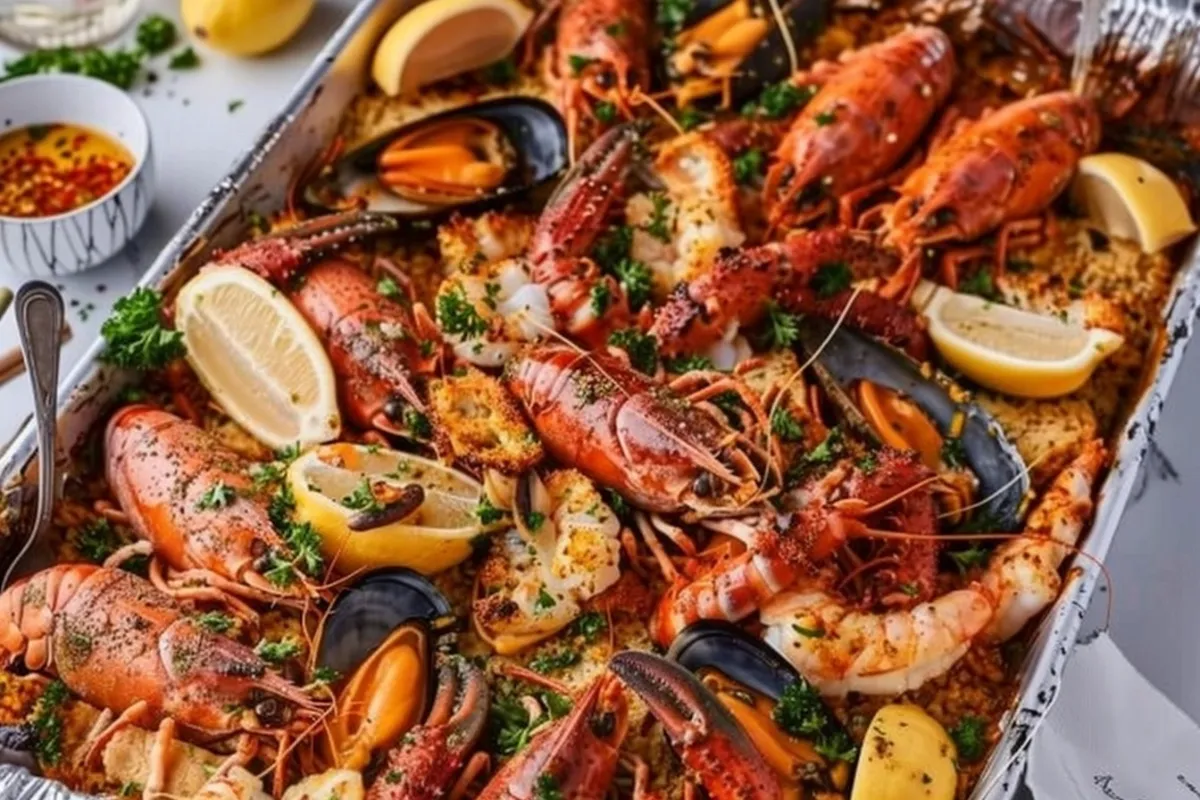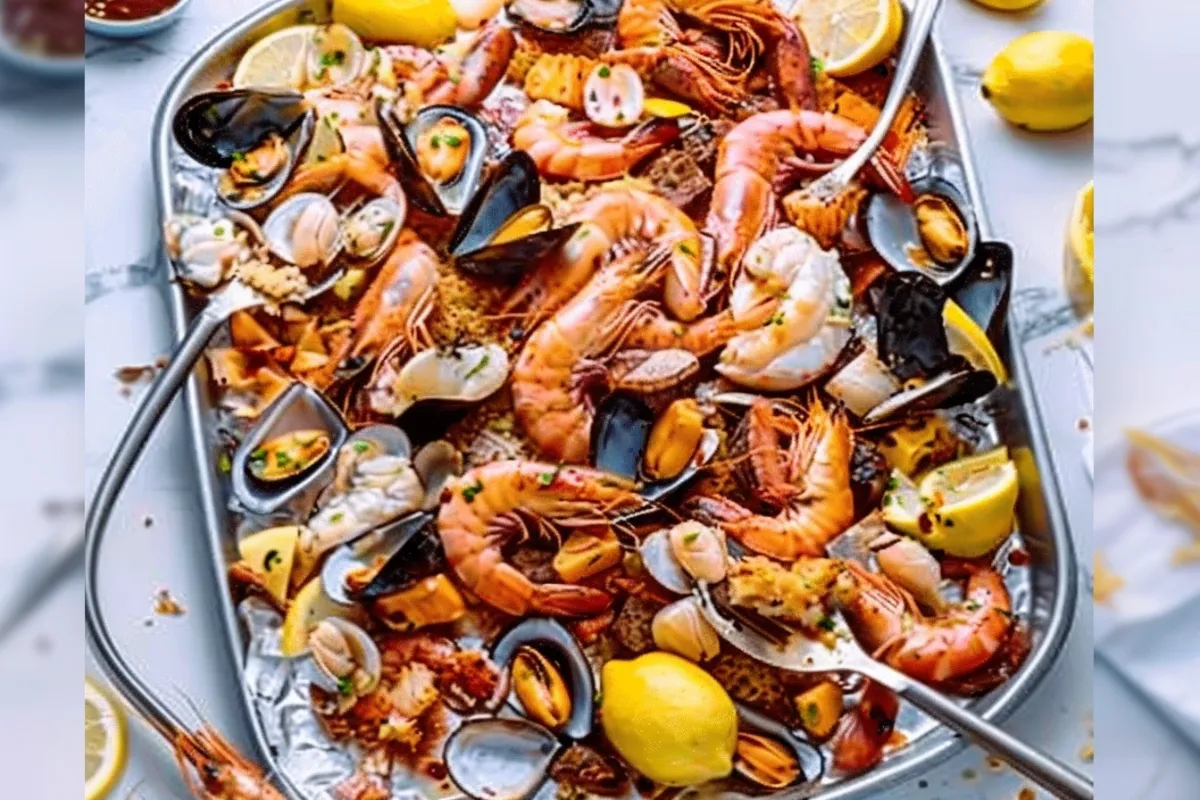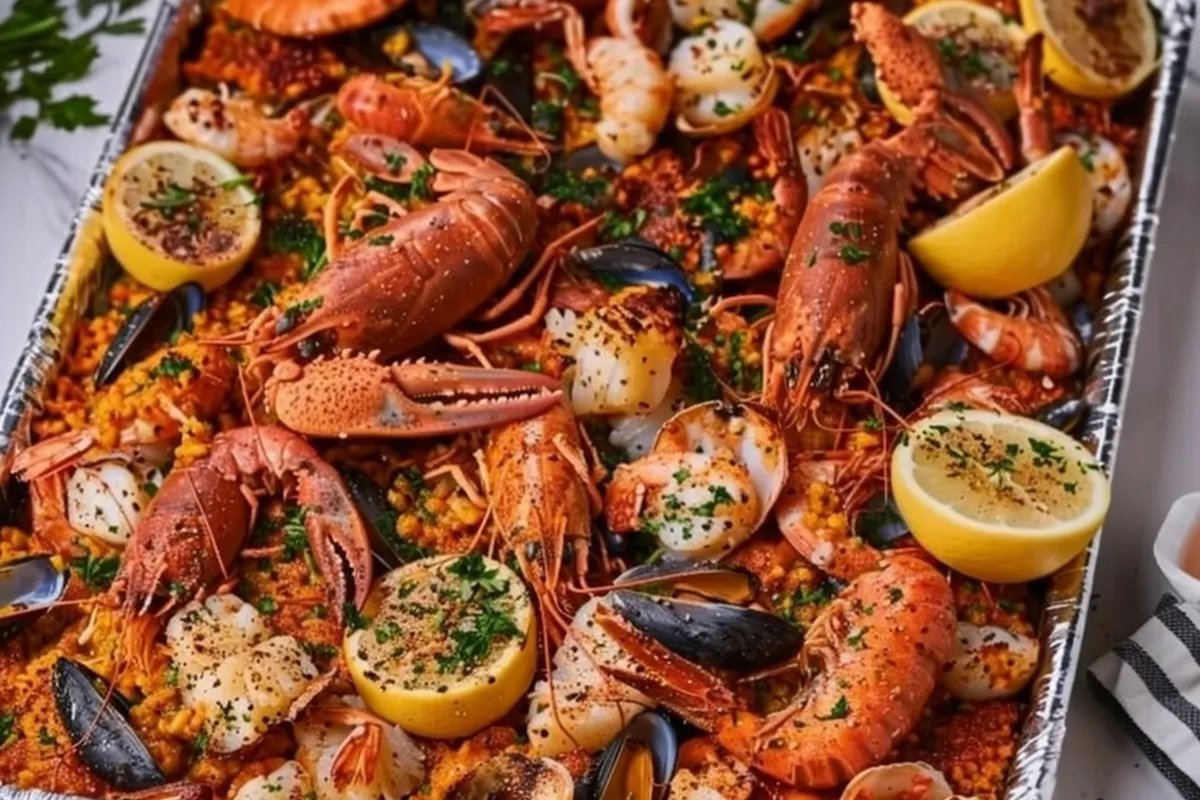Discover the ease and deliciousness of a seafood bake. Learn about ingredients, preparation, and tips for the perfect dish. Additionally, we will explore various regional adaptations and techniques to elevate your seafood bake.
Introduction to the Seafood Bake
A seafood bake is a delightful and versatile dish. Indeed, it’s perfect for both casual gatherings and special occasions. Consequently, it brings together a variety of flavors and textures. Furthermore, it is relatively easy to prepare, making it an accessible option for home cooks of all levels. Therefore, understanding the basics is essential for any home cook looking to create delicious and impressive meals. Moreover, the is adaptable, allowing you to customize the ingredients to your liking.
Understanding the Core Elements of a Seafood Bake
Key Components of a Seafood Bake
The main component is, of course, the seafood. Specifically, this can include a variety of options, allowing you to create a unique flavor profile. For example, shrimp, crab, and mussels are popular choices, providing a mix of textures and tastes. In addition, you can also add clams, lobster, or fish fillets, such as cod, salmon, or haddock, for even more variety. Therefore, the selection of seafood is crucial to the dish. Furthermore, choosing fresh and high-quality ingredients ensures the best flavor and texture, making it a memorable culinary experience. Consider the seasonality of certain types of seafood for the best taste.
Vegetables in a Seafood Bake
Vegetables are another key ingredient, adding flavor, nutrients, and textural contrast. Namely, potatoes, corn, and onions are staples, providing a hearty base. Moreover, bell peppers, garlic, and artichokes can also be included, adding more complex flavors. Additionally, these vegetables add flavor and texture, making each bite more enjoyable. Consequently, they absorb the delicious flavors of the seafood and broth, becoming a delightful part of the dish. Think about the color and texture of the vegetables you choose, for the best overall presentation.
Flavorings for a Seafood Bake
Seasonings and flavorings are what make each dish unique, transforming simple ingredients into a flavorful meal. Indeed, many recipes use butter, garlic, and herbs, such as parsley, thyme, or oregano. Furthermore, lemon, white wine, and various spices like paprika, red pepper flakes, and bay leaves are also common. Moreover, consider using Old Bay seasoning or other seafood blends for a more complex flavor profile. Therefore, the right flavorings can elevate your dish, making it stand out from other similar dishes and creating a memorable meal. Don’t be afraid to experiment with different combinations to find your preferred blend.
Step-by-Step Guide to Preparing a Seafood Bake
Preparing the Ingredients for a Seafood Bake
Proper preparation is essential for a successful dish, ensuring a smooth cooking process and optimal flavor. Specifically, wash and chop the vegetables into uniform sizes for even cooking. In addition, prepare your chosen seafood by cleaning it and cutting it into appropriate pieces. Furthermore, measure out all your seasonings and flavorings, ensuring they are ready for use. Therefore, having everything ready beforehand will make the process smoother and more efficient, allowing you to focus on the cooking process. This makes preparing the dish less daunting and more enjoyable.
Assembling Your Seafood Bake
Assembling your dish involves layering the ingredients in a baking dish to promote even cooking and flavor distribution. Namely, start with the potatoes and onions at the bottom, as they require the longest cooking time. Then, add the seafood and other vegetables in layers, allowing the flavors to meld together. Furthermore, pour over the broth and seasonings, ensuring everything is evenly coated. Therefore, layering is key to even cooking and flavor distribution, creating a balanced and delicious final dish. Consider using a large baking dish to accommodate all ingredients comfortably.
Baking Your Seafood Bake to Perfection
Baking is the final step in creating a delicious dish, requiring careful monitoring to achieve the best results. Specifically, cover the baking dish with foil to trap the moisture and ensure even cooking. In addition, bake at the recommended temperature for the specified time, usually around 375°F (190°C) for 30-45 minutes. Furthermore, remove the foil during the last few minutes for browning, adding a touch of color and texture to the dish. Therefore, monitor your dish to ensure it’s perfectly cooked, with the seafood being tender and the vegetables soft. Always use a reliable thermometer to verify the doneness.
Tips for a Delicious Seafood Bake
Ensuring Even Cooking in a Seafood Bake
Even cooking is crucial for a great dish, ensuring that all ingredients are cooked to perfection. Therefore, ensure that all ingredients are evenly distributed in the baking dish, avoiding overcrowding which can lead to uneven cooking. Additionally, make sure all the pieces are a similar size to cook at the same rate, preventing some items from being overcooked while others remain undercooked. Furthermore, don’t overcrowd the dish, as this can also lead to steaming rather than baking, resulting in a less desirable texture. Consequently, proper layering and ingredient size contribute to even baking, ensuring a consistent and delicious result throughout the entire dish.
Enhancing the Flavors of Your Seafood Bake
Several techniques can enhance the flavor of your dish, making it more robust and flavorful. Namely, using a flavorful broth such as seafood stock or clam juice can add depth and complexity. In addition, marinating the seafood beforehand in a mixture of olive oil, lemon juice, and herbs can intensify its taste. Furthermore, adding fresh herbs at the end, like parsley, cilantro, or basil, provides a burst of freshness and visual appeal. Consequently, these simple steps can make a big difference in the final product, adding layers of flavor that elevate the entire dish. Experimenting with different herbs and seasonings can personalize your dish.
Serving Your Seafood Bake
Serving your dish is just as important as preparing it, contributing to the overall dining experience. Specifically, serve it hot directly from the oven, when it’s at its peak flavor and texture. Furthermore, garnish with fresh parsley or lemon wedges, adding color and a touch of freshness. Moreover, provide crusty bread or rice for soaking up the delicious sauce, allowing guests to enjoy every bit of the flavorful broth. Therefore, a well-presented dish enhances the dining experience, making it both delicious and visually appealing. Consider using a large serving platter to showcase the dish.
The Cultural Significance of the Seafood Bake
Regional Variations of the Seafood Bake
The dish varies by region, reflecting local ingredients and culinary traditions. Indeed, New England is known for its clambakes, often cooked outdoors with layers of seafood, corn, potatoes, and seaweed. Furthermore, the South often features shrimp and crawfish bakes, showcasing the flavors of the Gulf Coast. Moreover, Mediterranean versions include olives, feta cheese, and a variety of herbs, reflecting the flavors of that region. Therefore, regional variations showcase the versatility of this dish, highlighting its ability to adapt to different tastes and local ingredients. Exploring these variations can inspire new ideas and flavor combinations.
Seafood Bake Traditions
Dishes like this are often associated with summer gatherings and celebrations, creating memorable culinary moments. Indeed, they are a communal way to enjoy fresh seafood, creating a sense of shared enjoyment and togetherness. Furthermore, they are perfect for outdoor events, family get-togethers, and casual social gatherings, adding to the festive atmosphere. Therefore, they are an important part of many cultures, representing a tradition of sharing and celebration. These gatherings often include music, games, and other forms of entertainment.
The Communal Aspect of a Seafood Bake
More than just a meal, a dish like this is a social event, bringing people together to share food and enjoy each other’s company. Specifically, it encourages a relaxed and interactive dining experience. In addition, it’s a hands-on dining experience, where guests often serve themselves and enjoy the food directly from the baking dish or platter. Therefore, it’s a great way to foster community, creating lasting memories and strengthening bonds. The communal aspect of the dish is a key part of its appeal.
Seafood Bake Recipes
Classic Seafood Bake Recipe
This classic recipe includes shrimp, cod, and mussels, providing a good balance of flavors and textures. Moreover, it also features potatoes, corn, and onions, the traditional vegetable staples. Specifically, it’s baked with butter, garlic, and herbs, creating a simple yet delicious flavor profile. Furthermore, it’s a simple and delicious version, perfect for beginner cooks or those seeking a traditional taste.
Mediterranean Seafood Bake Recipe
This recipe is inspired by Mediterranean flavors, offering a lighter and more aromatic taste experience. Namely, it includes shrimp, mussels, and white fish such as cod or halibut, showcasing the versatility of seafood. In addition, it features tomatoes, olives, and feta cheese, bringing a distinctly Mediterranean flair. Specifically, it’s baked with olive oil, garlic, and oregano, creating a fragrant and savory dish. Furthermore, it’s a lighter and more aromatic version, perfect for warm weather and lighter meals.
Spicy Seafood Bake Recipe
This recipe adds a spicy kick to the classic dish, offering a more intense and exciting flavor profile. Indeed, it includes shrimp, sausage, and crawfish, creating a hearty and flavorful combination. Specifically, it’s seasoned with Cajun spices and hot sauce, providing a bold and fiery taste experience. Furthermore, it’s a bold and flavorful version, ideal for those who enjoy spicy food and a more intense dining experience. This version will certainly wake up your palate.
Seafood Bake: Frequently Asked Questions
What is a seafood bake called?
A dish like this is sometimes called a seafood casserole or a seafood pot, depending on the region and specific style of preparation. Indeed, these terms refer to similar baked dishes, all featuring a combination of seafood, vegetables, and flavorings. Furthermore, the specific name may depend on the region and local traditions. Therefore, these names are often used interchangeably, referring to similar cooking methods and dishes.
Can you put frozen seafood in the oven?
Yes, you can put frozen seafood in the oven, making it a convenient option for quick meals. However, it may release more water during baking, which can affect the texture of the dish. Additionally, it may require slightly longer cooking time to ensure the seafood is cooked through. Therefore, be sure to monitor your dish and adjust the cooking time as needed. Using thawed seafood is preferable when possible to achieve a better final result.
Do you broil or bake seafood?
Baking is the preferred method, providing a gentle and consistent cooking environment that prevents the seafood from drying out or overcooking. Specifically, baking provides gentle, even cooking, resulting in a tender and flavorful final dish. However, broiling can be used to brown the top for a few minutes at the end of cooking, adding a touch of color and texture. Therefore, both methods have their place in seafood preparation, depending on the desired outcome.
What is the difference between a clam bake and a seafood boil?
A clambake is typically cooked in a pit lined with seaweed and hot rocks, using the steam to cook the food, creating a unique flavor profile. Whereas, a seafood boil is cooked in a pot of seasoned water, providing a simpler and more straightforward method. In addition, a clambake usually focuses on shellfish, particularly clams, and often includes lobster. Furthermore, a seafood boil can include a wider variety of seafood, vegetables, and spices, allowing for more versatility. Therefore, these methods differ in preparation, ingredients, and cooking techniques, each offering its own distinct culinary experience.
Conclusion: The Joy of Sharing a Seafood Bake
A dish like this is a versatile, delicious, and communal dish, making it a great option for a variety of occasions. Indeed, it’s suitable for many occasions, from casual weeknight meals to celebratory gatherings. Consequently, its simple preparation and endless variations make it a favorite among home cooks and seasoned chefs alike. Furthermore, the flavors and textures come together to create a delightful experience. Therefore, enjoy the process of creating and sharing your own perfect version, bringing joy and deliciousness to your table.


